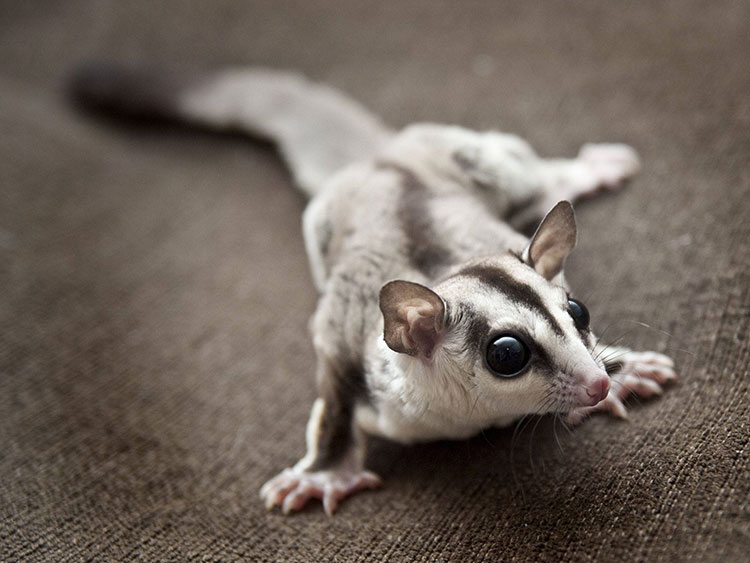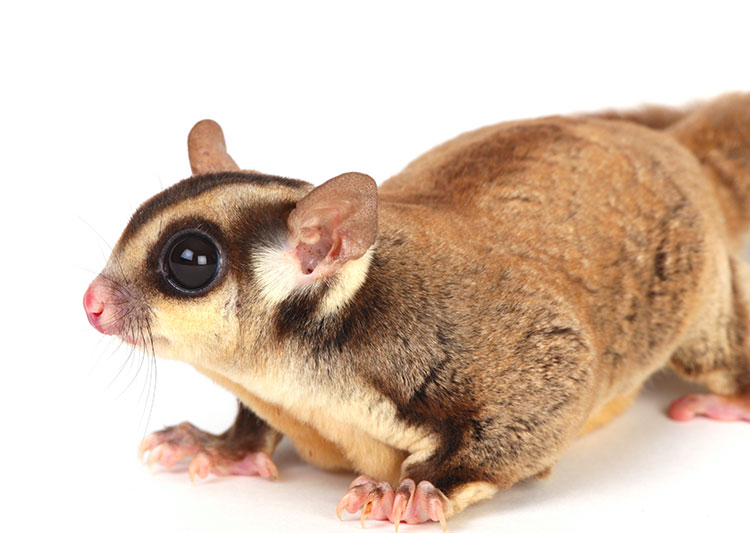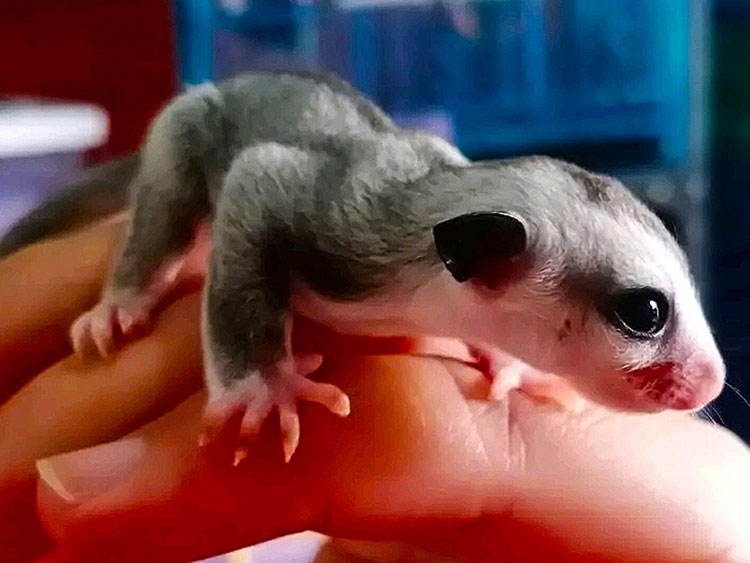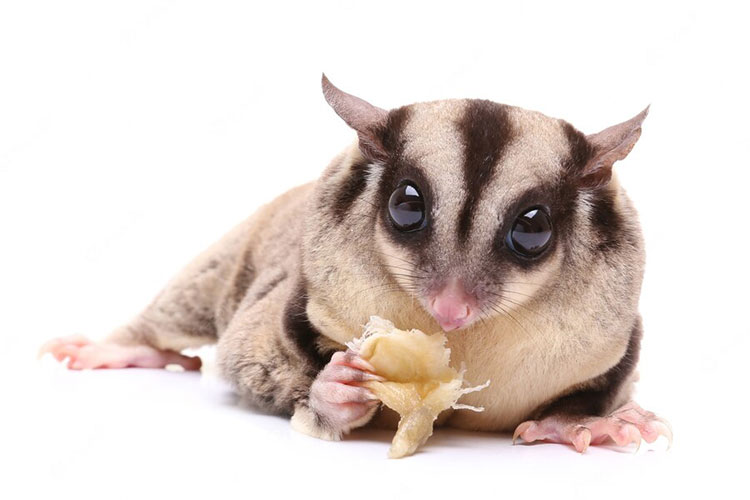Pet Sugar Glider Grooming Tips

Sugar gliders are a popular choice of pets, one of the major reasons is their ability to clean themselves. They require minimal assistance from humans when it comes to grooming.
This grooming guide will cover the basics of pet sugar glider grooming and provide tips on how you can enhance your pet sugar glider’s overall health through proper care of their fur, nails, and teeth.
Pet Sugar Glider Fur Care
Sugar glider fur is dry, soft and almost silky. Sugar gliders have fur that is densely packed which makes it hard for parasites such as mites to thrive in. This makes sugar gliders hypoallergenic pets that are ideal for individuals who are sensitive to other pet species and less likely to trigger an allergic reaction.
Sugar gliders do not require any human help in grooming, as they are self-groomers. Sugar gliders clean themselves by “spitting” into their hands and bathing themselves all over with their own saliva.

“Grooming nails” are found on sugar gliders’ back paws, next to their big toes. These grooming nails are very close to each other and act similar to a comb for proper grooming. There is very little shedding in sugar gliders since they have fur instead of hair.
Can you bathe your pet sugar glider?
It’s not advisable to bathe your pet sugar glider unless your veterinarian provides clear instructions. This is due to the fact that sugar gliders’ fur does not dry quickly once wet, which can cause stress for them and, in severe cases, lead to pneumonia or even death.
Similar to cats, sugar gliders are capable of bathing themselves well and do not require baths. If you need to remove something, such as dust or dirt from your pet sugar glider’s fur, you must ensure that your pet sugar glider is in good health with no visible signs of illness.
If you must clean a specific area of your pet sugar glider’s fur, make sure that the contact with running water is brief, preferably using a warm damp towel or wipe. Always dry your pet sugar glider with a clean, dry towel or cloth after you finished cleaning its fur.
Pet Sugar Glider Nail Care

Taking care of your pet sugar glider’s nails is important for their safety and comfort. Although sugar gliders rely on their nails to land safely after jumping, it’s still necessary to trim them to prevent your pet sugar glider’s nails from getting caught on toys, clothes, pouches or other objects. A sugar glider’s front paws have five fingers, while their back feet have two, and all of these nails require regular trimming.
For the best results, use a pet nail clipper designed specifically for small pets, as these are better suited to your pet sugar glider’s tiny paws than a standard pet nail clipper. Take extra care to avoid accidentally clipping the “quick” of your pet sugar glider’s nails, a very sensitive part of their body.
The “quick” refers to the soft cuticle containing blood vessels and nerves that run through a sugar glider’s nail. This vascular structure is mainly situated above the nail curve and provides nourishment to the nails, allowing them to grow and feel various sensations.
Important points to keep in mind when trimming your sugar glider’s nails:
- Use a magnifying glass (and a forehead light, if possible) to help you see better while using both hands. It’s actually easier to trim your pet sugar glider’s nails with the help of two people.
- Trim your pet sugar glider’s nails during the day when they are tired and calmer.
- Allow your pet sugar glider to roam around its cage for a few minutes after waking up or removing its pouch. This will give your pet sugar glider a chance to relieve itself in the cage and avoid any messy accidents during the trimming process.
- Offer your pet sugar glider its favourite snack to keep it occupied while you trim its nails. Carefully trim your pet sugar glider’s nails one at a time when it’s calm.
- Apply pressure to the middle of your pet sugar glider’s paw to spread the nails and make sure the foot is immobile to avoid causing any injury.
- Use a suitable pet nail clipper. Human nail clippers are not suitable for your pet sugar glider’s tiny nails.
- Only trim off the sharp, pointy tip of your pet sugar glider’s nail and avoid clipping the pink area that contains the blood vessels and nerves.
- If you accidentally clip the pink area (the “quick”) and bleeding occurs, immediately apply a small amount of cornstarch or flour onto the wound.
- Take breaks while trimming your pet sugar glider’s nails to allow it to rest and become comfortable again.
- Sugar glider claws grow quickly, so you should give them a trim every two weeks, or as advised by your pet sugar glider’s vet.
Pet Sugar Glider Teeth Care
Taking care of your pet sugar glider’s teeth requires proper attention and regular visits to a qualified veterinarian. Sugar gliders have a total of 40 teeth – incisors, molars, and premolars, all firmly set in their gums, allowing them to eat and chew tree bark. Unlike rodents, sugar gliders don’t have continuously growing teeth, but they are still susceptible to dental problems such as abscesses and gingivitis.

To prevent these issues, sugar glider vets recommend prophylactic scaling and polishing, which can only be performed by a qualified vet. Additionally, pet sugar gliders that consume sugary foods are more prone to periodontal diseases and tartar buildup, which must be removed under anaesthesia by a vet.
Tooth fractures can also occur in pet sugar gliders, leading to tooth decay and exposed roots, so it’s important to have regular oral exams and radiographs to assess their dental condition.
If your pet sugar glider undergoes dental surgery, you should modify their diet to soft foods that they can easily chew. You may also need to syringe-feed your pet sugar glider if they are unable to eat on their own after the surgery until they recover.
Give your sugar gliders special biscuits made with dental guards and take them to a veterinarian at least once a year for a checkup and teeth cleaning to prevent dental infections. Feeding your pet sugar glider live mealworms or crickets can also help prevent tartar buildup due to the hard exoskeletons of these insects. By providing your pet sugar glider with a proper diet, you can help keep their teeth healthy and strong for years to come.
Download the JoJo Pets app today for exclusive news and offers at https://jojo-pets.com/